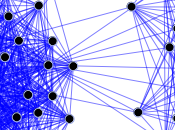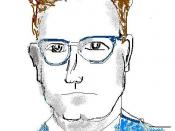(Waters & Crook, 1993) conclude that 'sociology' is the systematic breakdown of social behaviour. Its emphasis is on the social behaviour of the individual within the context of his or her social group or society. A way of understanding sociology can be done through the 'sociological imagination', which is a tool that provides many distinctive perspectives on the world, which generate innovative ideas and appraisal old. According to Charles Wright Mills, "people need a quality of mind to use information to develop reason to make connections between what is going on in the world and what is happening to themselves. He calls this the Sociological Imagination". Sociological imagination further helps us understand what the sociologist Charles Wright Mills signify when he writes of the 'personal troubles of milieu' and 'the public issues of social structure', and in addition to how 'sociological imagination' offers us a better understanding of the society in which we live, via exploiting on different perspectives of our world.
In order to define 'sociology' we must first look at our world in a bigger picture. The term 'sociology' can be perceived as the outcome of people's search for compelling, consistent, and specific facts about people and society. The theory of society being that "behaviour is influenced by social, political, occupational and intellectual groups and by particular settings in which individuals find themselves". Furthermore, sociology offers us a better understanding of the society in which we live, by considering "how people view themselves and how much of their life's outcomes are incorporated with society's influence" (Bilton, 1987, Ch.1).
This outlook of ones perceptive of person and society is the essence of 'sociological imagination'. The sociological imagination is the ability to see our private experiences and personal difficulties as entwined with the structural arrangements of our...



Terry
A good perspective essay on Sociological Imagination Concepts, and also used updated references list.
2 out of 2 people found this comment useful.